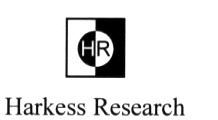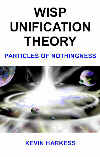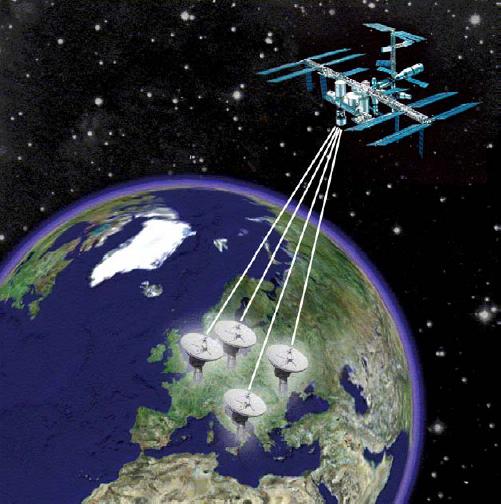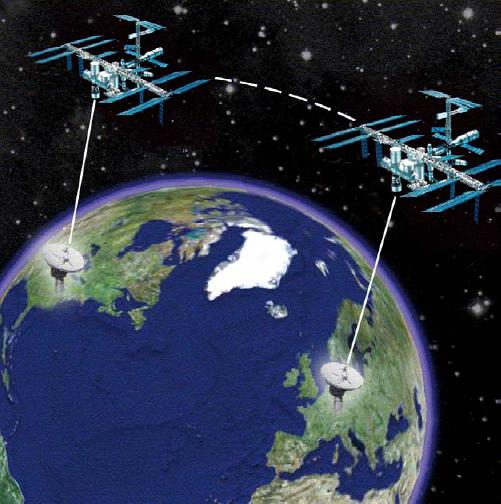
 Wisp
Unification Theory - ACES - The end of Relativity
Wisp
Unification Theory - ACES - The end of Relativity
- Home
- About Me
- Reasons why Einstein was wrong
- One-way speed of light experiments
- Hot topic
- Q&A
- ACES - The end of Relativity

- Book Contents
- Introduction
- 1 Matter,Space and Time
- 2 Symmetry
- 3 Fractals
- 4 Wisp Space
- 5 Gravity
- 6 Electromagnetic Force
- 7 Wisp & S.R: Fundamentals
- 8 Wisp & S.R: Electrodynamics
- 9 Wisp & S.R: Doppler effect
- 10 Wisp & S.R: Relativistic Mechanics
- 11 Big bang
- Appendix A
- Appendix B
- Index A-Z
- Copyright
- Feedback
ACES - The end of Relativity (2026)
Atomic Clock Ensemble in Space is a project that will put the most accurate clocks built into space in 2025.
Two ultra-stable ACES clocks - PHARAO and SHM - will work in unison onboard the International Space Station (ISS) to compare to ground-based atomic clocks through a microwave network link.
 |
 |
| Comparing atomic clocks - space-to-ground | Comparing atomic clocks - ground-to-ground |
The end of Special Relativity (2026)
A number of theories predict violations of special relativity. And ACES is expected to improve previous limits by an order of magnitude by comparing the space and ground clocks continuously during several station passes. But rather than improve previous test limits for special relativity, it will kill it off.
ACES will perform the first accurate oneway speed of light test, which has never been done before as the rules of relativity imply it's not necessary - Einstein's clock synchronization method fixes the speed of light to a constant value. Results from ACES's clock comparison experiment will show light's oneway speed is affected by the earth's motion through ether, causing the microwave clock signals to speed up and slow down as the earth moves through ether.
In 2026 ACES will perform tests to check if Einstein was right.
When ACES is equidistant between two ground stations it will send out a microwave time signal. There can only be one outcome from two choices:
1. Special Relativity is correct in that the oneway speed of light is constant. And both ground stations receive the signal simultaneously, and agree times that match ACES's. And all ether theories are finished.
2. Special Relativity is false. The speed at which light travels is affected by the ether flow v, and light travels at c+v and c-v respectively. Both ground stations and ACES's clocks do not agree times. Ground clocks will lead and lag compared to ACES's, due to variations in lights oneway speed caused by the ether flow.
An ether flow of 360km/s will result in a time difference maximum of +/-19nS for every 10km ground station separation. For a station separation of 800km, their times will lead and lag ACES's by +1500nS and -1500nS respectively. These are maximum values and will reduce if the line between stations is perpendicular to the ether flow. See wisp's one-way speed of light for further details.
It is fitting that an experiment in space onboard the ISS will bring Einstein's relativity to an end, as tests on earth have been unsuccessful in properly testing it.
Launch scheduled for 2025 (mission duration > 18 months)
For further information on the ACES see,
https://aces2022.sciencesconf.org/
https://en.wikipedia.org/wiki/Atomic_Clock_Ensemble_in_Space
ISS real time tracking, see
http://www.n2yo.com/
Home --
About Me -- Reasons
why Einstein was wrong -- One-way
speed of light experiments -- Hot
topic -- Q&A -- ACES
- The end of Relativity --
Book Contents -- Introduction
-- 1 Matter,
Space and Time -- 2
Symmetry -- 3
Fractals -- 4 Wisp Space
-- 5 Gravity -- 6
Electromagnetic Force --
7 Wisp & S.R: Fundamentals
-- 8 Wisp & S.R: Electrodynamics
-- 9 Wisp
& S.R: Doppler effect -- 10
Wisp & S.R: Relativistic Mechanics --
11 Big bang -- Appendix
A -- Appendix B -- Index
A-Z -- Copyright -- Feedback